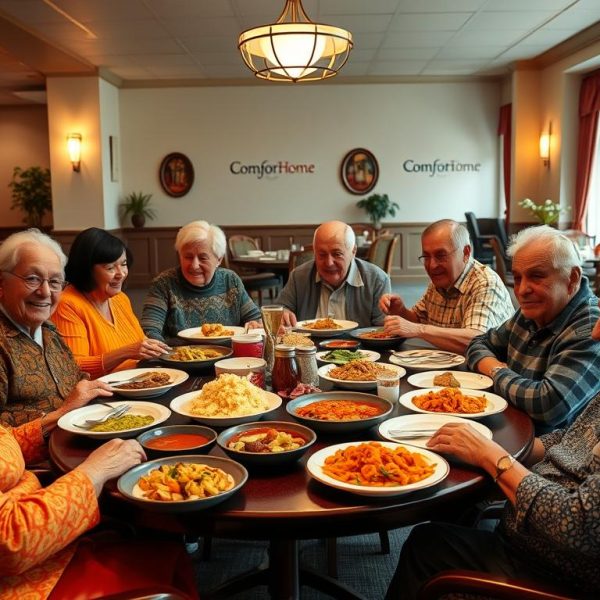It was a typical Saturday afternoon when Linda found herself sitting across from her mother, Evelyn, in the small, sun-drenched living room that had been the heart of their family home for decades. The room, with its familiar smells of lavender and the soft hum of the television in the background, should have felt comforting, but Linda was overwhelmed. Her mother, now in her late 70s, was beginning to struggle with the daily tasks that once seemed second nature. A few weeks ago, Evelyn had missed taking her medication twice, and her arthritis made it difficult for her to move freely around the house.
Linda had begun to question whether it was time to explore caregiving options. Should she hire an in-home caregiver, allowing her mother to stay in the place she loved, or would an assisted living facility provide the round-the-clock care Evelyn might soon need? The decision weighed heavily on her, as it does for many adult children in her position.
Choosing between in-home care and assisted living is a deeply personal and sometimes emotional journey. Both options offer unique benefits, and the best choice depends on a loved one’s health, personal preferences, and financial situation. Let’s walk through the experiences of families like Linda’s, exploring the pros and cons of each option, and highlighting what makes them suitable for different scenarios.
What is In-Home Care?
For Linda, the thought of her mother staying at home seemed ideal. Evelyn had spent over 40 years in this house; it was where she had raised her children, celebrated birthdays, and even mourned the loss of her husband. In-home care is exactly what it sounds like—a service where a caregiver comes to the senior’s home to provide assistance with daily living activities, including personal care, meal preparation, and medication management.
The beauty of in-home care lies in its flexibility. Evelyn could get the help she needed without leaving the comfort and familiarity of her home. Linda could hire a caregiver for a few hours a day or arrange for 24-hour live-in assistance, depending on her mother’s needs.
But as Linda researched further, she realized that in-home care had its challenges. While it would allow her mother to maintain her independence, it also required a lot of coordination. Evelyn’s home would need to be adapted for safety, like adding grab bars in the bathroom and stairlifts. Additionally, Linda would have to balance her own life—work, children, and marriage—while overseeing her mother’s care plan.
The Benefits of In-Home Care
- Familiar Environment: One of the most significant advantages is that the senior gets to stay in their own home. For Evelyn, this meant keeping her beloved garden, her cozy bedroom, and the view from her kitchen window, which had become her sanctuary over the years.
- Personalized Care: With in-home care, the caregiver’s attention is focused entirely on one individual. Evelyn wouldn’t have to share her caregiver’s time with other residents, ensuring personalized care tailored to her specific needs.
- Flexibility: Whether Evelyn only needed help in the mornings or round-the-clock supervision, Linda could adjust the caregiver’s schedule based on her mother’s health.
- Companionship: In-home caregivers often form close bonds with the seniors they care for. A compassionate caregiver could become a trusted companion for Evelyn, offering not just physical help but emotional support as well.
The Challenges of In-Home Care
- Cost: Depending on how much care Evelyn needed, in-home care could become quite expensive, especially if round-the-clock help was required. While some costs might be covered by insurance, Linda would need to explore her financial options.
- Limited Medical Assistance: If Evelyn’s health declined, and she required more specialized medical care, in-home care might not be enough. Caregivers can assist with personal care and basic medical tasks, but they aren’t trained nurses.
- Coordination: Managing in-home care requires a lot of coordination, from scheduling caregivers to ensuring they are trained for specific needs. Linda would need to oversee much of the process unless she chose a full-service caregiving agency.
What is Assisted Living?
Then, there was the option of an assisted living facility. Linda had driven past the new one in her neighborhood several times. It was a clean, modern building with lush gardens and a welcoming atmosphere. When she visited, she was impressed by the activities offered—yoga classes, art workshops, and even movie nights. The residents seemed engaged and happy.
In an assisted living facility, seniors like Evelyn would live in a community setting with access to medical care, meals, social activities, and personal assistance. The facility’s staff would be available 24/7 to help with daily tasks like bathing, dressing, and medication. For many families, this option provides peace of mind because they know their loved one is in a safe environment with access to care at all times.
However, Evelyn had always been fiercely independent. The thought of moving into a facility made Linda nervous—would her mother feel like she was losing her autonomy?
The Benefits of Assisted Living
- 24/7 Support: Assisted living provides round-the-clock care, which means Linda wouldn’t have to worry about her mother being alone in the middle of the night if something went wrong.
- Socialization: One of the biggest perks of assisted living is the built-in social environment. Evelyn could engage with other seniors, make new friends, and participate in group activities that would keep her mentally and emotionally stimulated.
- Access to Medical Care: Assisted living facilities typically have trained staff to handle medical emergencies. While they are not the same as nursing homes, they offer enough support to manage chronic conditions and ensure seniors are taking their medications properly.
- Structured Routine: For someone like Evelyn, having a structured daily routine could be beneficial. She wouldn’t have to worry about meal preparation, house cleaning, or maintaining her home, allowing her to focus on enjoying her day.
The Challenges of Assisted Living
- Loss of Independence: For seniors like Evelyn, the thought of leaving their home and moving into a facility can feel like a loss of freedom. Assisted living is designed to promote independence, but it still involves shared spaces and scheduled activities.
- Cost: Assisted living can be expensive, especially in higher-end facilities. Linda would need to look into insurance coverage, long-term care policies, and payment plans to determine if this option was financially feasible.
- Adjustment Period: Moving to a new environment can be a significant transition. While Evelyn might eventually adapt and thrive, the initial adjustment could be difficult, especially if she feels forced into the decision.
Making the Right Choice
As Linda reflected on her options, she realized there was no “one-size-fits-all” answer. Choosing between in-home care and assisted living depends on several factors—health, personal preferences, finances, and emotional needs. For now, Evelyn was still relatively independent, so in-home care felt like the right decision. But Linda knew that as her mother’s health changed, she might need to reconsider.
Every family’s journey is unique, and what works for one person might not work for another. For Linda and Evelyn, this was just the beginning of an ongoing conversation. They would continue to evaluate what was best as time passed, ensuring that Evelyn’s comfort and dignity remained the top priority.
Conclusion: Weighing the Options
Whether you choose in-home care or assisted living, the decision ultimately comes down to understanding what your loved one needs most—familiarity or structure, independence or supervision, companionship or privacy. The key is to involve your loved one in the decision-making process, ensuring that their voice is heard and their preferences are honored.








